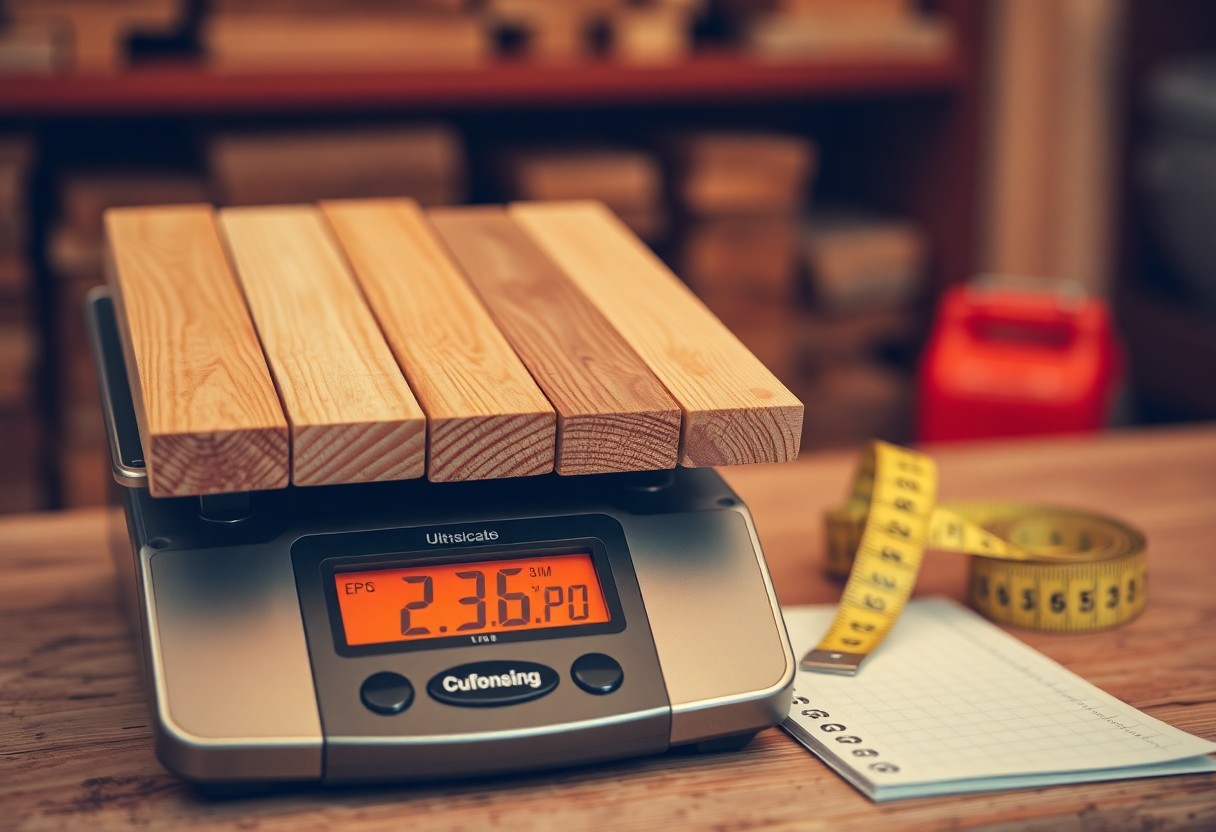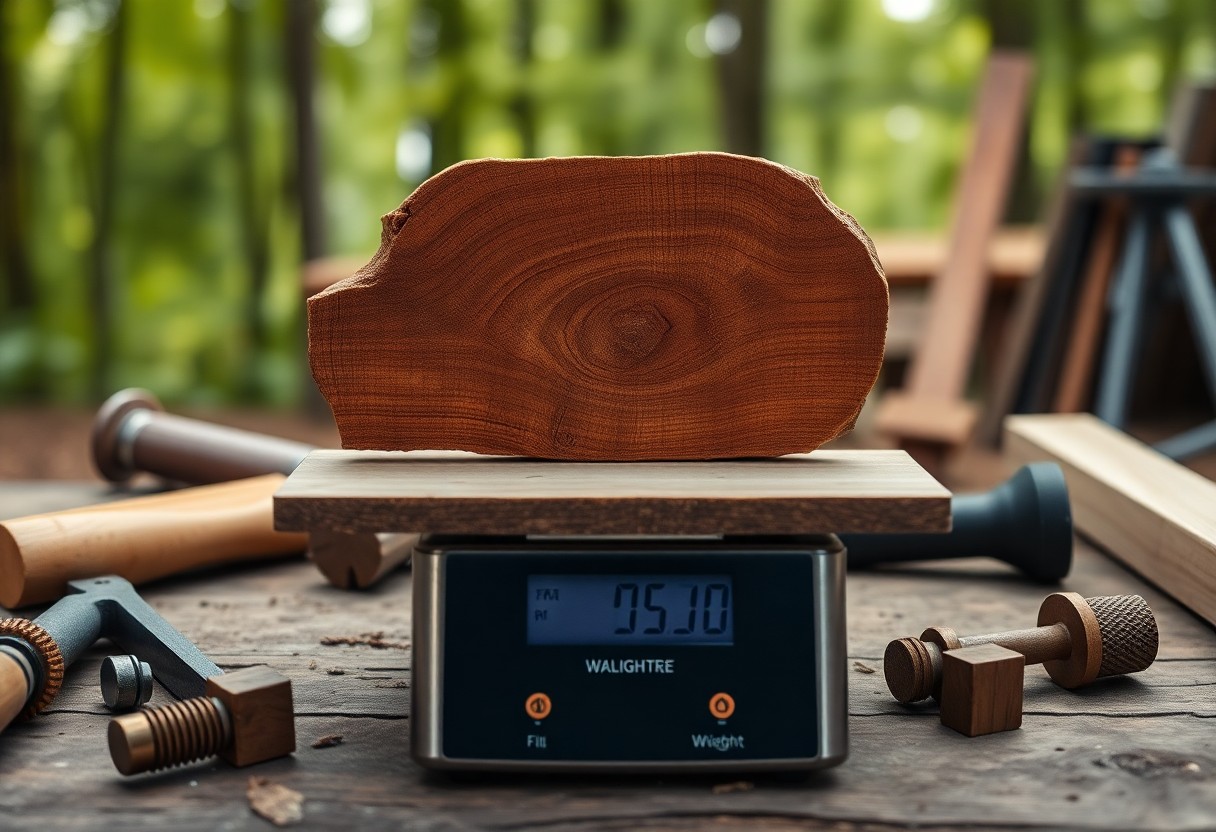When working with balsa wood, accuracy is key. Whether building a model airplane or crafting a delicate wooden structure, understanding the weight of the material is vital.
To ensure precision, they need a reliable tool to calculate the weight of balsa wood. That’s where the Balsa Wood Weight Calculator comes in.
This handy resource takes the guesswork out of calculating the weight of balsa wood, providing users with an easy-to-use formula to determine the exact weight of their project materials.
What is Balsa Wood?
For those unfamiliar with this unique material, balsa wood is a type of wood that comes from the Balsa tree, scientifically known as Ochroma pyramidale.
Native to South America, this tree is renowned for its incredibly lightweight yet strong wood, making it an ideal choice for various applications.
Properties and Characteristics
Balsa-like in its versatility, this wood boasts a range of impressive properties, including high strength-to-weight ratio, low density, and exceptional buoyancy. Its soft, porous texture also makes it an excellent insulator, further increasing its value in various industries.
Uses and Applications
Characteristics such as lightness, strength, and durability make balsa wood an attractive material for a wide range of uses, from model building and crafting to surfboard and boat construction.
Further exploration of balsa wood’s uses reveals its popularity in aerospace engineering, where its unique properties make it an ideal material for aircraft and spacecraft components. Additionally, balsa wood is often used in wind turbine blades, taking advantage of its exceptional strength and low weight to maximize energy production.

Why Calculate Balsa Wood Weight?
Some designers and engineers may overlook the importance of calculating balsa wood weight, but it plays a significant role in various aspects of project development.
Accurate weight calculation ensures that the final product meets the desired specifications, performs optimally, and maintains its structural integrity.
Importance in Design and Engineering
Behind every successful project lies meticulous planning and attention to detail. Calculating balsa wood weight allows designers and engineers to make informed decisions about the project’s overall design, material selection, and construction methods.
Impact on Structural Integrity
Below the surface of a seemingly sturdy structure lies the risk of collapse or damage due to inaccurate weight calculations. Balsa wood weight affects the overall load-bearing capacity of a structure, making it imperative to get it right.
A slight miscalculation can lead to devastating consequences, such as structural failure, damage to surrounding components, or even injury to users. By accurately calculating balsa wood weight, designers and engineers can ensure that their creations stand the test of time and withstand various environmental conditions.
How to Calculate Balsa Wood Weight
All balsa wood enthusiasts need to know how to calculate the weight of their wood accurately. This calculation is imperative in various applications, including model building, crafting, and engineering. By understanding the weight of balsa wood, one can determine the structural integrity and stability of their project.
Formula and Calculations
Wood density plays a significant role in calculating the weight of balsa wood. The formula to calculate the weight is: weight = volume x density. To get the volume, one needs to multiply the length, width, and height of the wood piece.
Conversion Factors and Units
At times, it’s necessary to convert between different units of measurement. To calculate the weight of balsa wood, one may need to convert between cubic inches, cubic centimeters, or grams. Perceiving the correct conversion factors is vital to get accurate results.
- 1 cubic inch = 16.387 cubic centimeters
- 1 cubic centimeter = 0.061 cubic inches
- 1 gram = 0.035274 ounces
Balsa wood density typically ranges from 0.09 to 0.13 grams per cubic centimeter. When calculating the weight, it’s imperative to use the correct density value for the specific type of balsa wood being used. They should also consider the moisture content, as it affects the density and weight of the wood.
- Moisture content can increase the weight of balsa wood by up to 10%
- Different types of balsa wood have varying densities
- Accurate measurements are key to getting the correct weight calculation
Balsa Wood Weight Calculator Tools
Despite the complexity of calculating balsa wood weight, there are various tools available to make the process easier and more accurate.
These tools can be categorized into online calculators and resources, and manual calculation methods. By utilizing these tools, individuals can quickly and efficiently determine the weight of balsa wood, saving time and effort in their projects.
Online Calculators and Resources
Resources such as online calculators and weight charts provide a convenient way to calculate balsa wood weight.
These resources are often readily available and can be accessed with just a few clicks. They typically require users to input specific dimensions and densities, and then provide an estimated weight calculation.
Manual Calculation Methods
On the other hand, manual calculation methods involve using mathematical formulas to determine balsa wood weight. These methods require a deeper understanding of the material’s properties and density, but can provide a more precise calculation.
Plus, manual calculation methods allow individuals to understand the underlying principles of weight calculation, enabling them to make adjustments and modifications as needed.
This approach can be particularly useful for those who work with balsa wood regularly, as it provides a sense of control and flexibility in their projects.
Common Mistakes and Considerations
Many users of the Balsa Wood Weight Calculator overlook simple yet significant factors that can greatly affect the accuracy of their results. It’s crucial to be aware of these potential pitfalls to ensure reliable calculations.
Density Variations and Moisture Content
Beneath the surface of seemingly uniform balsa wood lies a complex web of density variations and moisture content fluctuations. These hidden factors can significantly impact the weight of the wood, making it crucial to account for them in calculations.
Measurement Errors and Rounding
About the time users start punching in numbers, they often forget to double-check their measurements and rounding techniques. This carelessness can lead to inaccuracies that snowball into substantial errors.
To avoid such mistakes, they should take the time to carefully measure the dimensions of the balsa wood, ensuring precise values for length, width, and thickness.
Additionally, they should be mindful of the rounding methods used, as even slight discrepancies can add up to significant differences in the calculated weight.
Real-World Applications and Examples
Once again, the importance of accurate weight calculations becomes apparent when considering the various industries that rely on balsa wood.
From aerospace engineering to furniture making, the unique properties of balsa wood make it an ideal material for a range of applications.
Aerospace and Model Building
Examples of balsa wood’s use in aerospace and model building abound, where its lightweight yet durable properties make it perfect for crafting scale models of aircraft and spacecraft. By accurately calculating the weight of balsa wood components, engineers and hobbyists can ensure precise balance and stability in their designs.
Furniture Making and Construction
Behind the scenes of furniture making and construction, balsa wood is often used to create lightweight yet sturdy frames and components. By calculating the weight of balsa wood accurately, craftsmen can ensure that their creations are both aesthetically pleasing and structurally sound.
Indeed, in furniture making, the weight of balsa wood can greatly impact the overall stability and durability of a piece. By using a balsa wood weight calculator, craftsmen can optimize their designs to achieve the perfect balance of form and function, resulting in beautiful and functional pieces that will stand the test of time.
To wrap up
Now that they’ve researchd into the world of balsa wood weight calculation, they can confidently tackle projects that require precision and accuracy. With the calculator at their disposal, they’ll be able to estimate the weight of their balsa wood creations, ensuring that their designs are both functional and aesthetically pleasing. By mastering this important skill, they’ll be well on their way to bringing their innovative ideas to life.








